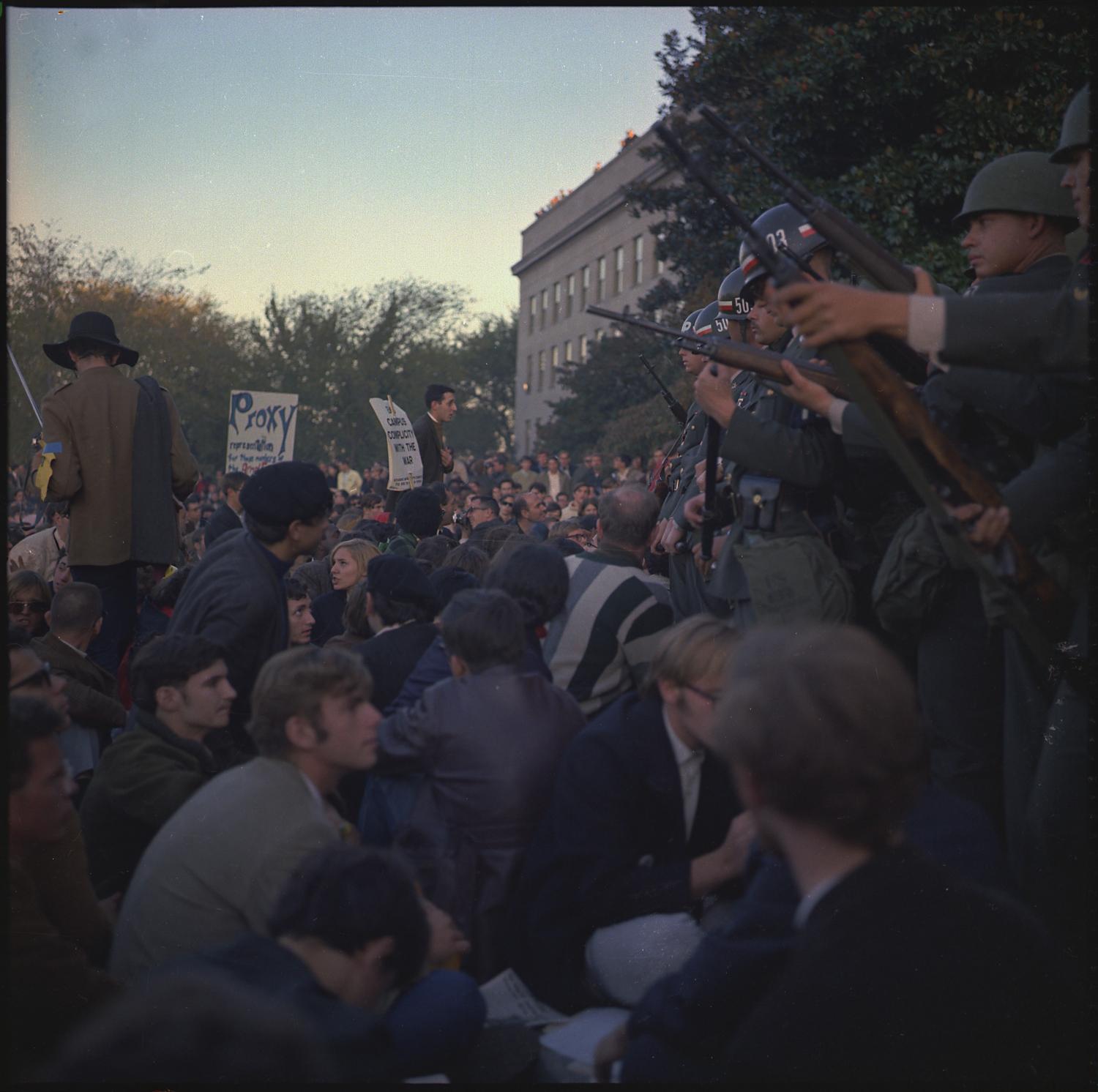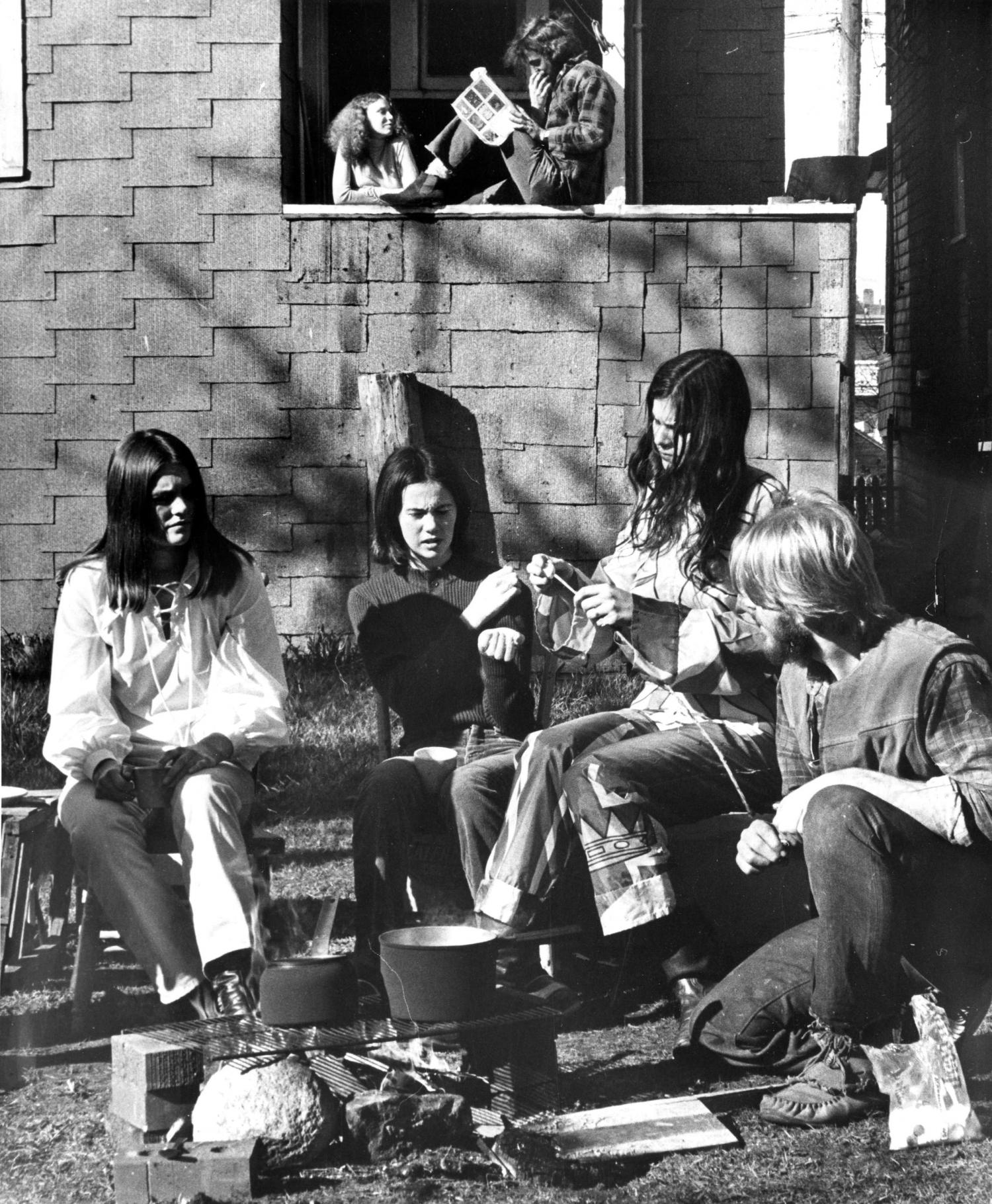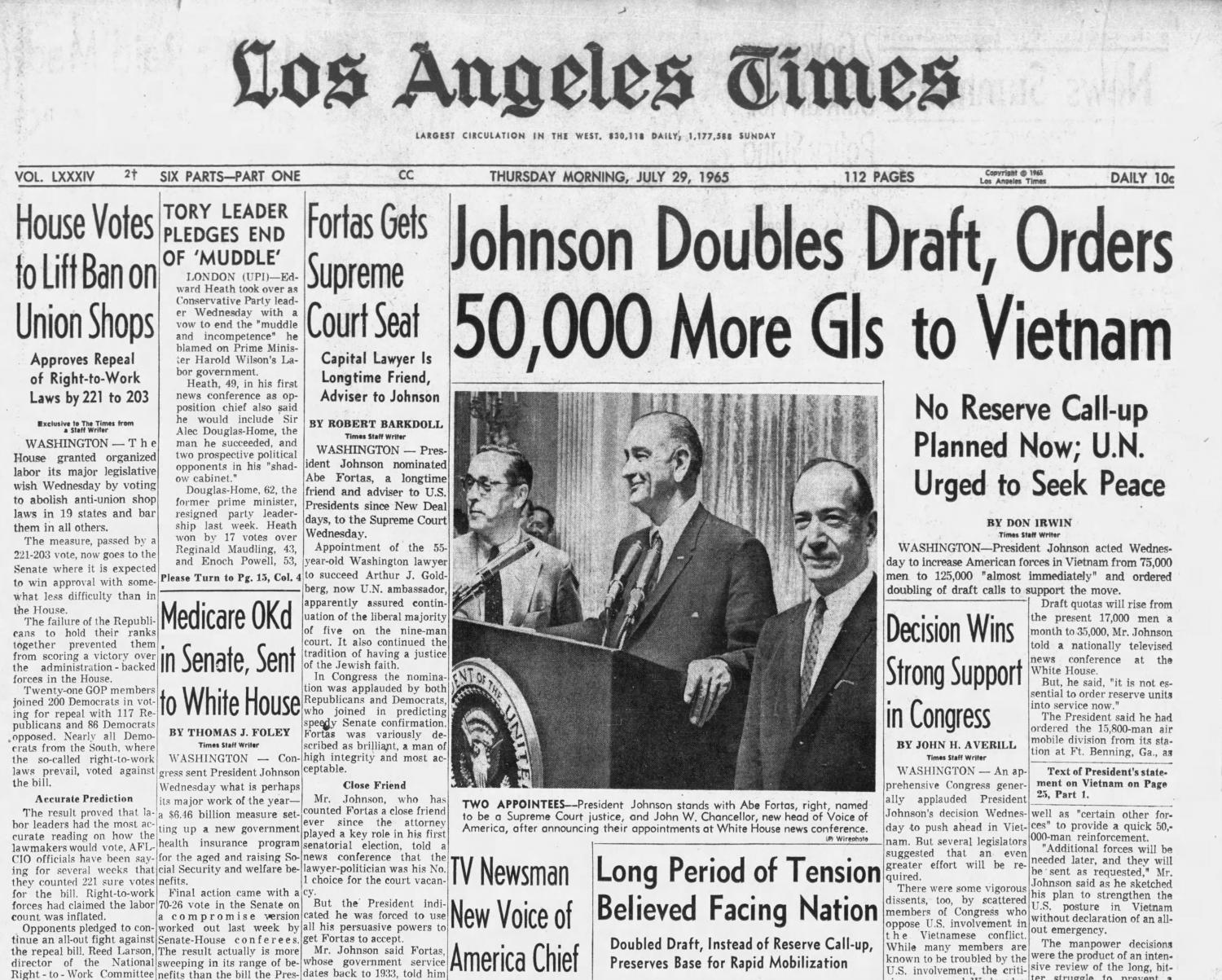War Resisters in B.C.
American men seek refuge from the Vietnam War
Date: 1965
Some came to dodge the draft. Others — those who had already enlisted — were labelled deserters, fleeing the treatment of the military, the danger of combat, and the threat of imprisonment. For tens of thousands of young Americans who left their country in the 1960s and 1970s, Canada seemed like a refuge from the dizzying set of contradictions the United States had become: the conservative ideology of the Cold War and the idealism of the civil rights movement; the skepticism of student activists towards a confusing war in Vietnam and the jingoism hoisted upon them by conscription.
Between 1964 and 1975, an estimated 40,000 such war resisters crossed the border. In Canada, draft dodgers were simply classified as immigrants, a part of the 250,000 or so Americans who emigrated during those years. Some brought their families. Most were well educated or highly skilled from their time in the military, satisfying Canadian immigration requirements.
About 10,000 would settle in British Columbia, establishing communities in places such as Tofino, Lund — near Powell River — and Kitsilano in Vancouver. Their arrival coincided with an expansion in Canadian higher education, and some resisters found work in academia at institutions like Simon Fraser University and the University of British Columbia, often working in the humanities and social sciences. With them, they brought their countercultural leanings; Vancouver, in particular, became a locus of antiwar activism.
By the late 1960s, the West Kootenays had become another such hub. The region’s concentration of Doukhobors, a spiritual Christian group from Russia, had fostered a spirit of pacifism and communalism, which appealed to the young war resisters. The city of Nelson, in particular, became a destination for like-minded West Coasters, as well as those from farther-flung states like New York and Texas. Pockets of Americans also formed in between the farm communities of the Kootenays.
The transition to their new lives in Canada was not always smooth. The country’s unblemished image as a haven from American militarism would soon be complicated by the banalities of immigration law and the differing opinions of Canadians themselves. In the countryside, Americans of means were able to buy large acreages, driving up the value of land and earning the resentment of their neighbours. Draft dodgers with less money, meanwhile, witnessed firsthand the class bias embedded in the country’s immigration system, and found it hard to gain acceptance within the larger Canadian society. In addition, their alternative lifestyles won them few friends with local authorities.
Indeed, many young Americans felt their status to be tenuous. The decision to leave for Canada was seen by some back home as cowardly or unfair, letting others die in their place. “People say we’re gutless,” one draft dodger from Washington, D.C., told reporters in 1968. “We have guts. We can never go back to our country, city or family without facing jail. It’s a hell of a tough decision for an 18-year-old to make.”
Things would change in 1977 when American President Jimmy Carter granted amnesty to draft dodgers and military deserters. Even then, roughly half of those who had come up to Canada ultimately stayed. They had established communities and had worked to foster an egalitarian society where they had put down roots. Some had risen to positions of political leadership, like war resister Corky Evans who later served in the provincial cabinet as an NDP MLA. Others continued different forms of activism, cultivating a spirit of dissent in the Kootenays.
As recently as the 2003 invasion of Iraq, Americans have continued to come up to Canada as an expression of their disapproval for their homeland’s military actions. The West Kootenays remain a frequent destination. Nelson, in particular, was dubbed “Resisterville” by CNN, a so-called “anti-war refuge.” It’s no small wonder. In 2006, one in four immigrants in the West Kootenays was American by birth: five times the provincial average.
To this day, a certain free-spiritedness colours Nelson and the surrounding region, an ethos that has even vexed some American veterans in the past. In 2004, a monument dedicated to draft dodgers planned to be erected in Nelson drew the ire of Fox News and pro-military groups. After the city rebuffed the plans following the controversy, the statue found a home in nearby Castlegar.
Sources:
- "About Nelson." The Nelson Daily, 14 Dec. 2009, https://thenelsondaily.com/page/about-nelson.
- B.C. City Rejects Draft-Dodger Monument | CBC News. CBC News, 29 Sept. 2004, www.cbc.ca/news/canada/british-columbia/b-c-city-rejects-draft-dodger-monument-1.490692.
- Frum, Barbara, and Fred Cawsey. "Destination Vancouver: Draft Dodgers Head North." CBC Archives, 16 Dec. 1970, https://www.cbc.ca/archives/entry/destination-vancouver-draft-dodgers-head-north.
- Gamlin, Gordon. "Women Played a Key Role in Local War Resistance during the Vietnam Era." The Source, 19 Apr. 2016, https://thelasource.com/en/2016/04/18/women-played-a-key-role-in-local-war-resistance-during-the-vietnam-era/.
- Hernandez, Jon. "Welcome to Lund, the ‘End of the Road’ Where Draft-Dodgers Rejoice." CBC, 6 Feb. 2017, https://www.cbc.ca/news/canada/british-columbia/welcome-to-lund-draft-dodgers-1.3968147.
- May, Glen. "Canadian City ‘Mecca’ for American Draft Dodgers." Lima News, 11 Mar. 1968, p. 3.
- Murphy, Aisling. Journeys to the "North Country Fair:" Exploring the American Vietnam War Migration to Vancouver. Simon Fraser University, 2010.
- Rodgers, Kathleen. Welcome to Resisterville. UBC Press, 2014.
- Stewart, Luke. The Re-Writing of History: The Misuse of the Draft "Dodger" Myth against Iraq War Resisters in Canada. University of Waterloo, 2012, http://activehistory.ca/papers/history-papers-12/.
- Tizon, Tomas Alex. "In Canada, Flashback to the ’70s." Los Angeles Times, 24 Mar. 2005, https://www.latimes.com/world/la-fg-resist-archive24-2005mar24-story.html.
- Valiante, Giuseppe. "Vietnam War Draft Dodgers Left Mark in Canada." CTV News, 16 Apr. 2015, https://www.ctvnews.ca/canada/vietnam-war-draft-dodgers-left-mark-in-canada-1.2329725.
- War Resisters' Statue Finds a Home. CBC News, 11 May 2006, www.cbc.ca/news/canada/british-columbia/war-resisters-statue-finds-a-home-1.627046.





